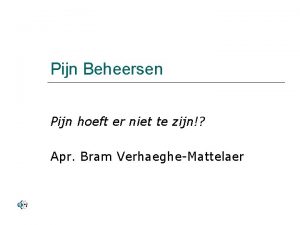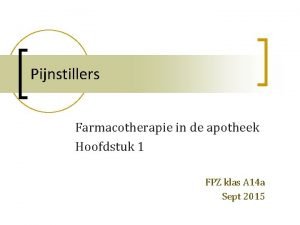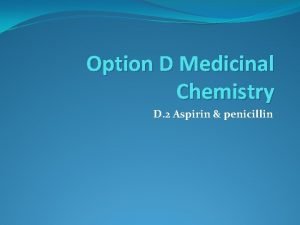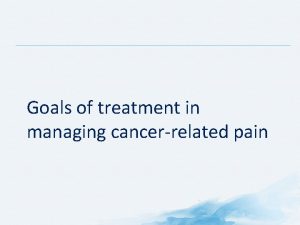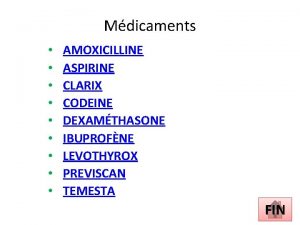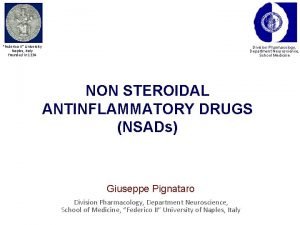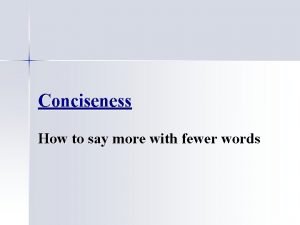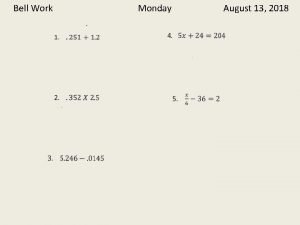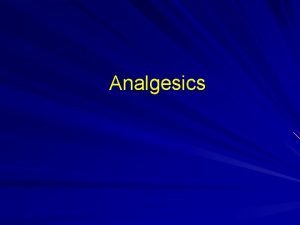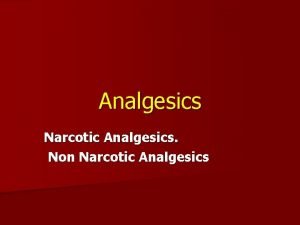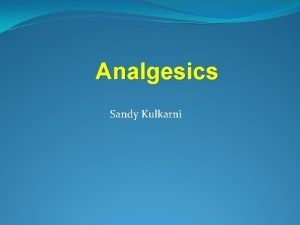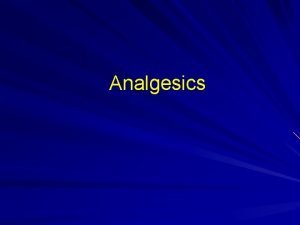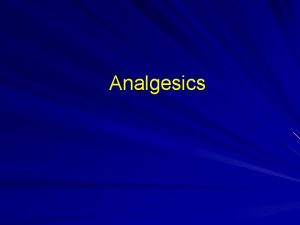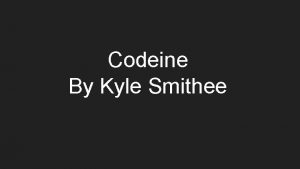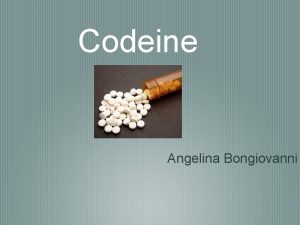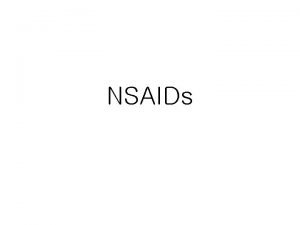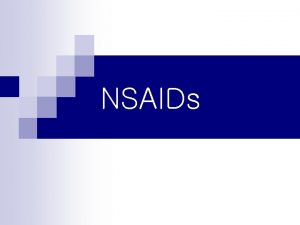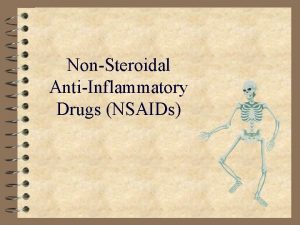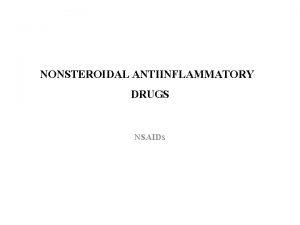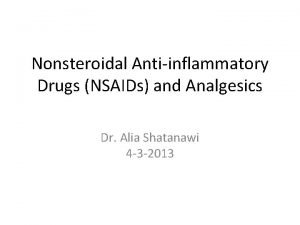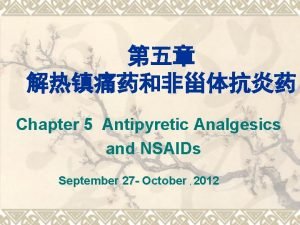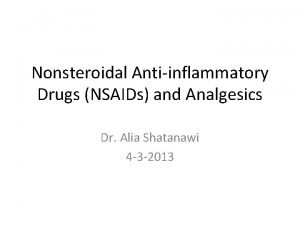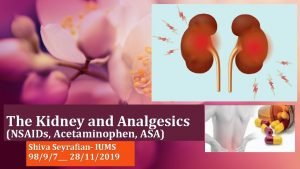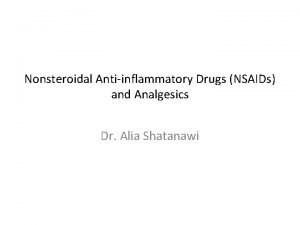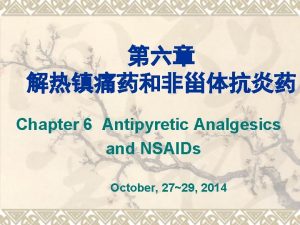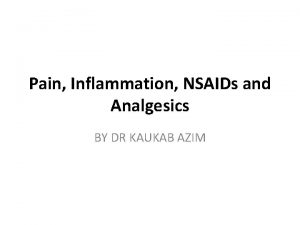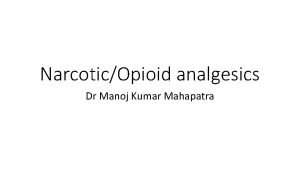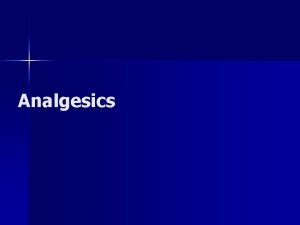Simple analgesics Paracetamol regularly Codeine phosphate NSAIDS Diclofenac
























- Slides: 24


Simple analgesics • Paracetamol regularly • • Codeine phosphate NSAIDS - Diclofenac and naproxen – common examples - Not well tolerated in the older person so must be used with caution

Morphine • Mu-opioid receptor agonist • Active metabolites • Renally excreted – therefore, not for use in renal impairment • Subcutaneous morphine - approximately twice as potent as oral morphine - i. e. 20 mg oral = 10 mg subcut • Codeine 60 mg = 5 -8 mg morphine i. e. 60 mg codeine QID = approx. 5 mg Q 4 H

Methods of morphine administration • Normal Release - Morphine elixir 4 strengths available – be careful to check before administration - Sevredol™ (10 mg & 20 mg tablets only) • Controlled release morphine - Note: NOT to be crushed - m-Eslon™ (10 mg, 30 mg, 60 mg, 100 mg) can be sprinkled - Arrow-Morphine LA tablets (10 mg, 30 mg, 60 mg, 100 mg) • Intraspinal – Step 4 on WHO Ladder

Oxycodone • Mu- and kappa- opioid receptor agonist (semi-synthetic) • • Renally excreted - 19% unchanged, 50% oxymorphone Onset action: 20 -30 min orally • ? Less active metabolites than morphine

Oxy. Norm. TM and Oxycodone CR • In palliative care, Oxy. Norm. TM is generally considered to be twice as potent as morphine when taken orally • Subcutaneous oxycodone • approximately twice as potent as oral oxycodone • i. e. 20 mg oral = 10 mg subcut • All preparations are funded - cost not excessive - useful alternative to morphine when morphine not tolerated or in presence of mild to moderate renal impairment

Oxy. Norm. TM and Oxycodone CR contd Normal release: • Oxy. Norm. TM capsules (5 mg, 10 mg, 20 mg) • Oxy. Norm. TM oral liquid (5 mg/5 m. L) • Can be used for titration and breakthrough pain (1/5 th – 1/10 th of the 24 hr dose) Controlled release: • Oxycodone CR tablets (5 mg, 10 mg, 20 mg, 40 mg, 80 mg) have a biphasic response - therefore, no need to give immediate release at the same time as slow release dose

Methadone • Indications: - Morphine toxicity / unacceptable side effects - Inadequate pain relief with other opioids - Renal failure - Neuropathic pain - Previous narcotic dependence – on maintenance methadone • Routes: oral or subcut • 5 mg tablet • 3 strengths of elixir available – 2 mg, 5 mg and 10 mg per m. L - check carefully before administration

Methadone contd • Less nausea, constipation and drowsiness than morphine • t ½ or half life – 8 -75 hrs • Difficult medication to use – needs medical specialist input

Transdermal Fentanyl • Indications - When the oral route is unavailable e. g. dysphagia or severe nausea and/or vomiting - Renal failure - Social (convenience) - Morphine “phobia” - Side effect profile, e. g. less constipation and sedation • Pain unresponsive to morphine is unlikely to be responsive to fentanyl, due to also being a mu-opioid receptor agonist • Need to titrate with short acting morphine or oxycodone before starting patch - see example on next slide

Transdermal Fentanyl contd Example of dose comparison when titrating: A 12. 5 microgram/hour patch is (approx. ) equivalent to 30 mg morphine in a 24 hr period

Transdermal Fentanyl contd • t ½ or half life - 13 -22 hrs • Steady state plasma concentrations after 36 -48 hrs • Onset of action 12 hrs • Duration of action 72 hrs • Contraindication – uncontrolled pain requiring rapid dose titration • Patches are 12. 5, 25, 50, 75 and 100 mcg/hour – not daily • The depot of drug in skin will continue to provide some analgesia for approx. 17 hrs after a patch is removed

Co-analgesics • Antidepressants e. g. nortriptyline • Anticonvulsants e. g. sodium valproate, gabapentin, clonazepam • Non steroidal anti-inflammatories e. g. diclofenac, naproxen • Steroids e. g. dexamethasone • Anti-spasmodics e. g hyoscine butylbromide (Buscopan)

Antiemetics • Metoclopramide - Dopamine receptor antagonist - Increases peristalsis in upper gut - Contraindicated in complete bowel obstruction and those with Parkinson’s disease - Watch for agitation and akathisia in higher doses, with chronic use, and with presence of renal disease - Oral or subcut • Domperidone - Similar to metoclopramide but less extrapyramidal effects - Drug of choice in older person - Oral route

Antiemetics Haloperidol • Dopamine receptor antagonist, hence not for use in Parkinson’s disease • Potent centrally acting antiemetic – very useful for opioid induced nausea, hypercalcaemia and renal failure • Can be given subcutaneously

Antiemetics Cyclizine • Oral and subcut routes available - although subcut can be painful • Antihistamine, antimuscarinic • Indicated for motion sickness, mechanical bowel obstruction, raised intracranial pressure • Drowsiness can be profound • Can cause confusion in elderly so best to dose reduce

Antiemetics Dexamethasone • Centrally acting antiemetic • Especially useful in liver metastases, raised intracranial pressure, and to reduce vomiting in bowel obstruction • Added to first line antiemetics in palliative care • Watch for signs of confusion in the older person • Can cause insomnia – given in the morning to reduce this effect • Can be given subcut - need to watch for volume if given as bolus dose – may need to be divided

Antiemetics Levomepromazine • Low potency anti-psychotic, blocks a number of differing receptors including dopamine, histamine, adrenergic and serotonin • Offers analgesic, antipsychotic, hypnotic and anti-emetic properties in palliative care • Most commonly used for intractable nausea and vomiting and severe agitation or delirium in last days of life • Side effect – akathisia and significant sedation

Midazolam • Commonly used for agitation and anxiety associated with dyspnoea • Short acting benzodiazepine • It is more quickly eliminated from the body compared with clonazepam. • Preferred routes in palliative care subcut, intranasal and buccal

Laxatives • Start laxatives when starting opioids • Laxsol™ - daily or twice daily - up to 3 tablets TDS sometimes necessary - docusate softens and senna stimulates • If not effective, add in Lax-Sachets™ as an osmotic – needs to be introduced early (note: requires special authority funding) • Kiwi crush will not normally control opioid induced constipation

Suppositories and enemas These will not often be required if a good bowel regime has been started - use glycerine suppositories to soften and bisacodyl suppository to stimulate - or use sodium citrate/sodium lauryl sulfoacetate/glycerol (Microlax. TM enema) – use with caution - or if these are not effective, try an oil retention enema - or use a Fleet™ enema with care

Precautions • Stimulants are contraindicated for people with complete bowel obstruction • Bulking agents and high fibre diets are poorly tolerated in the palliative person • Lactulose is an osmotic laxative which is poorly tolerated in people who are unable to maintain a high fluid intake

Remember to ask • Why are you using the medication? • What is the most appropriate route? • Can we reduce the burden of taking lots of tablets? • Are there any contraindications? • Have you considered non-pharmacological interventions? Reassess, reassess

Useful resources and references • New Zealand Palliative Care Handbook. (8 th Edition). (2016) - http: //www. hospice. org. nz/resources/palliative-care -handbook • New Zealand Formulary - http: //nzformulary. org/ • Palliative Care Drugs - http: //nzformulary. org/ • Medsafe - http: //www. medsafe. govt. nz/ • The local hospice or community pharmacist • Local DHB prescribing guidelines e. g. local hospice or specialist hospital team
 Diclofenac slaapverwekkend
Diclofenac slaapverwekkend Diclofenac
Diclofenac Mechanism of action of opioid analgesics
Mechanism of action of opioid analgesics Analgesic classification
Analgesic classification Analgesics examples
Analgesics examples Clarix codeine
Clarix codeine Miosis
Miosis Nsaid classification
Nsaid classification Acute gastritis
Acute gastritis It is a movement in which some elements recur regularly.
It is a movement in which some elements recur regularly. Gina visited the library regularly
Gina visited the library regularly Hobby vs interest
Hobby vs interest Importance of social interaction
Importance of social interaction And objective
And objective The probability that a regularly scheduled flight
The probability that a regularly scheduled flight Renew yourself regularly
Renew yourself regularly Words that sound alike because they share
Words that sound alike because they share Alliteration adalah
Alliteration adalah Meter definition literature
Meter definition literature Tanka examples 5-7-5-7-7 english
Tanka examples 5-7-5-7-7 english Narrative poem about your day
Narrative poem about your day Folk dance poem
Folk dance poem Example of oxymoron in a poem
Example of oxymoron in a poem How to say conciseness
How to say conciseness Doug regularly mows his neighbor's lawn
Doug regularly mows his neighbor's lawn
